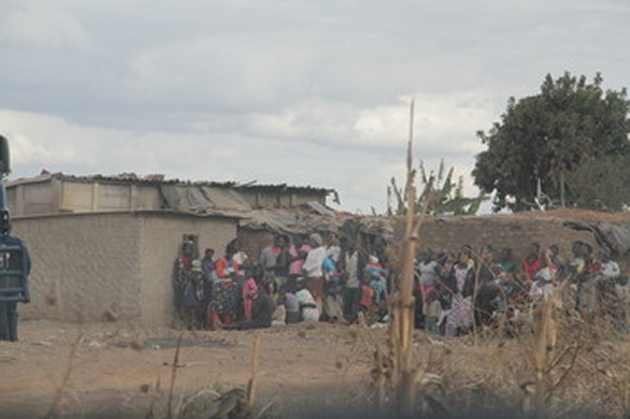Normal rainfall season forecast

 Elita Chikwati and Mary Doma
Elita Chikwati and Mary Doma
ZIMBABWE is likely to receive normal rainfall throughout the 2014-15 cropping season, though some areas will experience dry spells towards the end of the season.
Meteorological Services Department forecaster Mrs Linia Mashawi Gopo yesterday said Zimbabwe would receive normal rainfall in most parts of the country from next month to March next year.
She said areas in Region One such as all Mashonaland provinces, Manicaland and northern parts of the Midlands were likely to receive normal to above normal rainfall from October to March.
If farmers receive adequate fertiliser on time, analysts say the country will record a bumper harvest, more than the 1.4 million tonnes harvested this year.
Tobacco output is also likely to increase from the 216 million kilogrammes sold this year and might surpass the 236 million kg reached by white former commercial farmers in 2000.
This will be another boost for the Zimbabwe Agenda for Sustainable Socio-Economic Transformation’s “nutrition and food security” cluster that this year registered phenomenal growth.
National food self-sufficiency is a key goal of the economic blueprint, one of whose key clusters identifies food security and nutrition as key drivers of economic revival.
Said Mrs Gopo; “We expect the bulk of the country to have normal rainfall throughout the season from October to March.
“Region 1 will receive normal to above normal rainfall with a slight bias towards above normal from January to March, while Region 2, which comprises of Matabeleland North and north western parts of Midlands will receive normal rainfall with a slight bias towards above normal rains from October to January, but as we move into the season we expect a slight decrease in the rainfall from normal to below normal rains,” she said.
Mrs Gopo said Region 3 was expected to receive normal to above normal rainfall during the first months from October to January and from January to March would get normal rains with a bias towards below normal rainfall.
Region 3 is comprised of Matabeleland South, southern parts of Midlands south east Matabeleland South and Masvingo provinces.
She urged farmers in Region 1 to increase the area under cropping since the areas were expected to receive normal rainfall.
“Farmers in region 2 and 3 are going to experience a short season hence planting with the first rains is encouraged. They should also stagger the plantings and should prioritise planting small grains,” she said.
“There is need to enhance the rainfall this season, as such the national cloud seeding programme is encouraged.”
“Irrigation is a must for those with access to dams with water. The policies of small dam construction and borehole drilling deepening should continue mindful of changing climate.
“Those with water should not wait for the main rains to fall but can plant starting end of September as the temperatures will be high enough for crop germination,” she said.
Mrs Gopo said small grain seed should be distributed to all regions by the end of September.
“ Incentives for maize production for the purposes of grain reserves should be urgently provided rather than wait until the middle of the season.
“People should be warned to refrain from selling maize from the previous season unless they have no choice,” she said.
The forecast for reduced rainfall over Region 3 causes concern especially for people as well as wild animals in the National Parks in Matabeleland and Masvingo provinces hence the need to secure water reservoirs.
Zimbabwe Farmers Union second Vice president, Mr Berean Mukwende, said farmers should not be alarmed by the rainfall forecast, but should keep normal routine and plant early.
“Farmers should practice conservatory agriculture with minimum disturbance of the soil to keep the moisture,” he said.
He said those in Regions 2 and 3 should rehabilitate their irrigation facilities for use during the farming season. Farmers should continue to listen to daily and fortnightly weather forecasts and rely on Agritex officers for advice.
Last year Zimbabwe received normal to above normal rains, which resulted in the increase in maize production from 785 000 tonnes to above 1,4 million tonnes.
However, there were extreme rainfalls that resulted in floods in Tokwe Mukorsi, mud slides in Domboshava with heavy rains destroying property in different parts of the country.










Comments